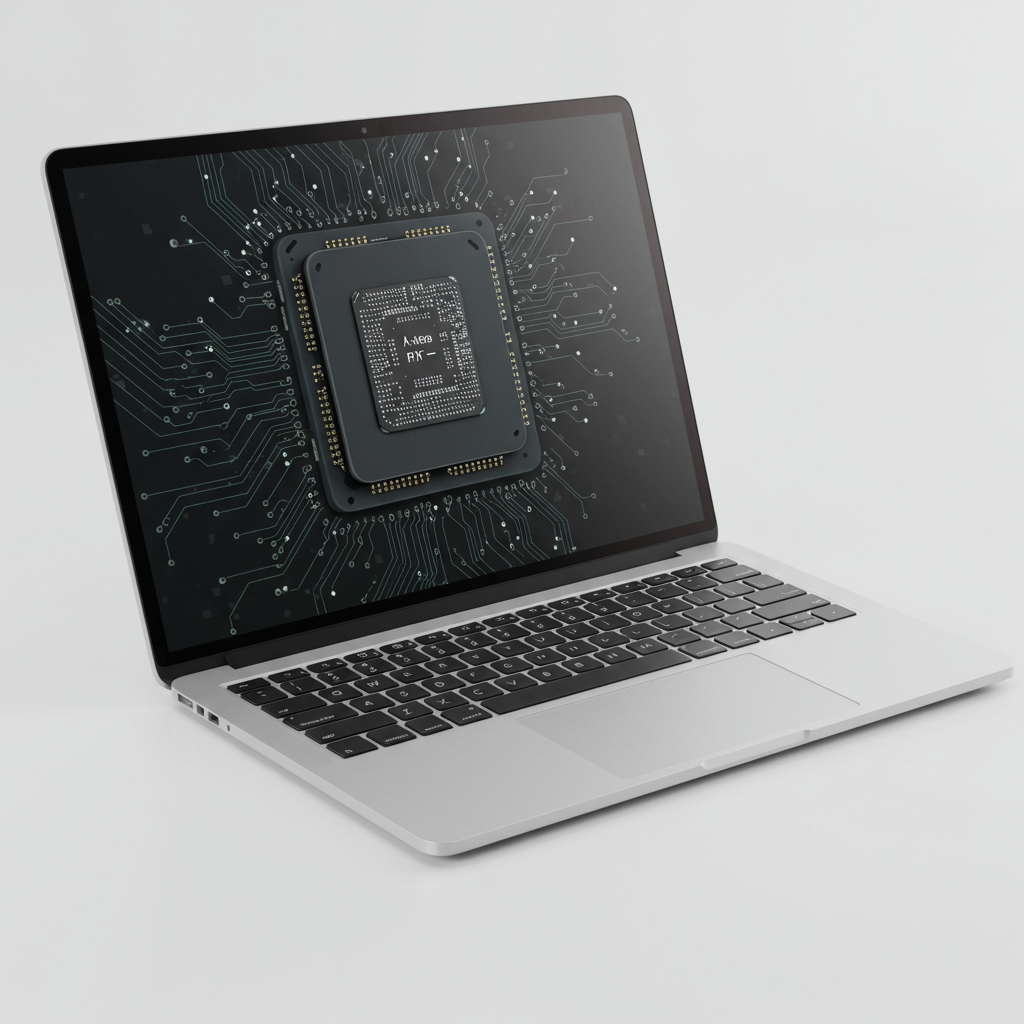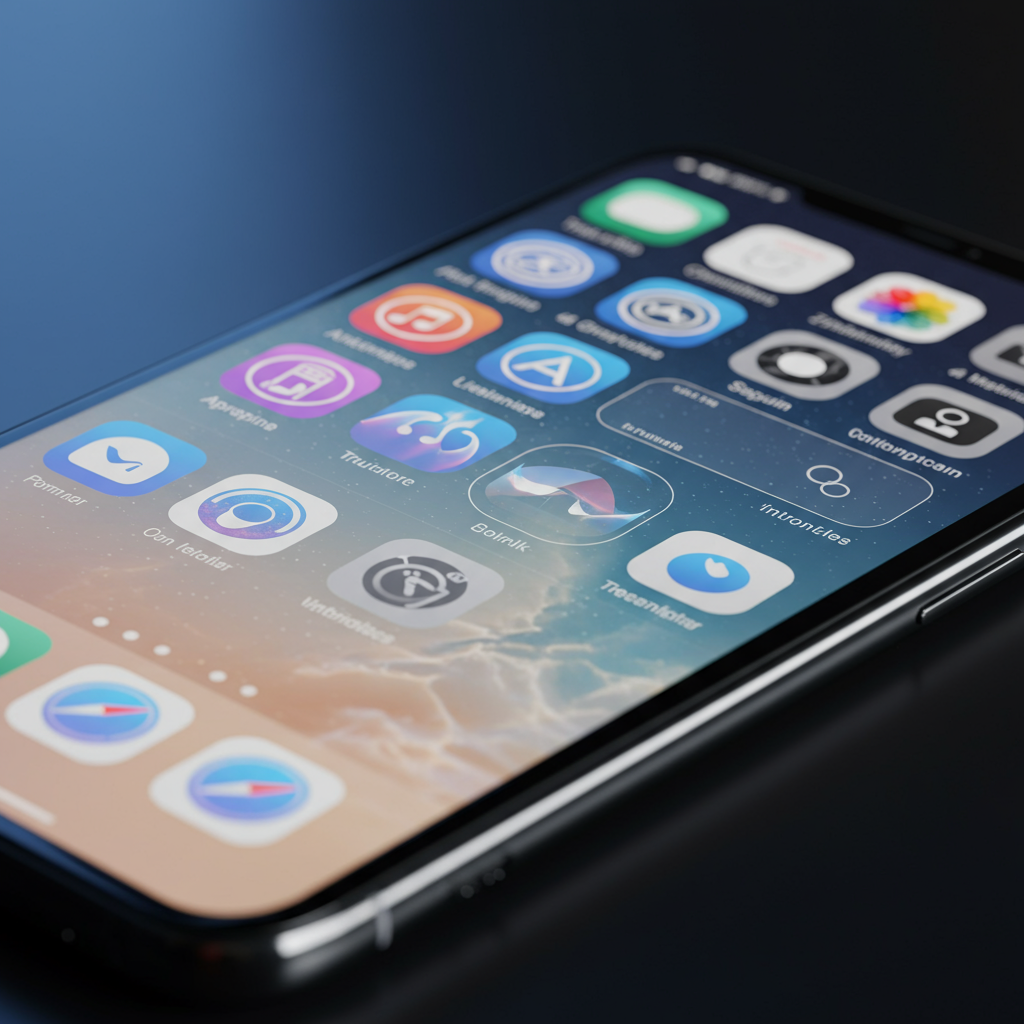Imagine an Apple macbook priced not like a premium laptop, but more like a mid-range smartphone. Recent, compelling rumors suggest this could become a reality much sooner than expected. Reliable sources point towards Apple developing a remarkably more affordable MacBook model that makes a significant departure from current designs. Instead of the familiar M-series processors found in today’s MacBooks, this rumored device could run on an A-series chip – specifically, the powerful A18 Pro, the same silicon slated for the upcoming iPhone 16 Pro. This strategic shift aims to unlock a lower price point and bring the macOS experience to a broader audience.
The Core Rumor: An iPhone Chip Inside a MacBook
The central claim comes from well-known Apple analyst Ming-Chi Kuo, who shared details via social media. According to Kuo’s insights, Apple is actively working on a “more-affordable MacBook.” This isn’t just another iteration of the MacBook Air; the key differentiator is the processor. Kuo reports this new model will utilize the A18 Pro chipset, a dramatic change from the custom M-series chips developed for Macs.
Hints of this potential device first surfaced earlier this year. Reports indicated that MacRumors analyst Aaron Perris discovered references to various unreleased Apple models, including a specific MacBook identifier, Mac17,1, while examining macOS 15.1 code. While many details were unconfirmed at the time, MacRumors later suggested this Mac17,1 might be the mystery machine powered by the A18 Pro.
Limited details about the hardware have emerged so far. Kuo indicates the device is expected to feature a 13-inch display, mirroring the size of the MacBook Air. Breaking from Apple’s recent, more subdued color palette for laptops, this affordable MacBook could be available in multiple vibrant options, potentially including silver, blue, pink, and yellow, reminiscent of the iMac line.
Production timelines are also part of the rumor. Mass production for this new, cheaper MacBook is reportedly scheduled to begin in late 2025 or early 2026. Kuo projects Apple aims for significant sales volume, estimating this model could account for five to seven million MacBook units in 2026 alone.
Why Apple Might Use an iPhone Chip
Putting a chip designed for an iPhone into a laptop might sound counterintuitive at first. However, industry analysts and technical experts argue this approach makes significant strategic and technical sense for Apple, particularly for targeting a lower price segment. It boils down to a few key factors: cost, performance sufficiency, and revolutionary efficiency.
Unlocking a Lower Price Point
The primary driver behind using an A-series chip in a MacBook is cost reduction. Manufacturing A-series chips in the massive volumes required for iPhones potentially allows for lower unit costs compared to the more specialized M-series chips. This enables Apple to aim for a price tag substantially below the current MacBook Air lineup. The M4 MacBook Air currently starts around $999 (though older M3 or M1 models can be found cheaper, sometimes as low as $649).
Analysts speculate this A18 Pro MacBook could land in the $600 to $700 range, or even less. This positions it directly against lower-cost Chromebooks and mid-range Windows laptops, opening up new market segments for Apple, such as the education sector and users who primarily need a reliable machine for basic computing tasks like web browsing, email, streaming media, and light productivity work.
Performance That’s ‘Good Enough’
Skepticism about using an iPhone chip often centers on performance. Can an A-series chip truly power a full desktop operating system like macOS? Experts who have benchmarked Apple’s silicon suggest yes, for the target audience. Analysis indicates that the A18 Pro chip is remarkably capable. Its single-core performance is reportedly strong, scoring comparably to even the newer M4 chip in some tests (around 3400 on Geekbench 6). While its multi-core and graphics performance might be closer to earlier M-series generations like the M1 (8500-8600 on Geekbench multi-core), this level of power is more than sufficient for the typical tasks a budget laptop user undertakes.
For everyday activities like juggling multiple browser tabs, watching videos, using office applications, and staying connected online, the A18 Pro provides ample speed and responsiveness. It offers a solid foundation for a smooth macOS experience without needing the peak performance of an M3 Pro or M4 chip designed for demanding creative or professional workloads.
The Battery Life Revolution
Perhaps the most compelling technical reason for using an A18 Pro chip is its potential for exceptional power efficiency. The A18 Pro is manufactured using a more advanced 3-nanometer (nm) process node compared to the 5nm process used for chips like the M1. A smaller process generally allows for greater transistor density and, crucially, improved power efficiency at comparable performance levels.
Combining the A18 Pro’s “good enough” performance with its superior 3nm power efficiency could translate into battery life unprecedented for a MacBook. While M-series Macs already boast impressive longevity, an A18 Pro model might push this even further, potentially offering multiple days of use on a single charge for light tasks. This class-leading battery life would be a major selling point, appealing strongly to students, travelers, and anyone who values unplugged freedom.
Potential Design & Features
Beyond the internal silicon, rumors hint at other aspects of this affordable MacBook. As mentioned, a 13-inch display size seems likely, maintaining a popular and portable form factor. The rumored availability in multiple, vibrant colors could make this model visually distinct and potentially target a younger or more style-conscious demographic, mirroring the colorful approach seen with the iMac and some older Mac models.
The enhanced power efficiency of the A18 Pro could also allow for a thinner and lighter physical design compared to current MacBooks. This sparks speculation that the device could potentially serve as a spiritual successor to the discontinued 12-inch MacBook, a model praised for its extreme portability, though criticized for its performance limitations at the time. A modern take on a super-portable, yet capable, MacBook could resonate with users who prioritize mobility.
Strategic Implications for Apple
Introducing a significantly cheaper MacBook with an iPhone chip serves clear strategic goals for Apple. The primary aim is to boost overall MacBook shipments. After experiencing a surge during the peak of the COVID-19 pandemic, Apple is reportedly looking to return to shipping around 25 million MacBook units annually. This new affordable model, projected to sell 5-7 million units itself, would be a key component of that growth strategy.
By offering a lower entry point into the MacBook ecosystem, Apple can better compete in market segments currently dominated by more affordable Windows laptops and Chromebooks. This could attract users who might otherwise find the current MacBook Air price prohibitive.
However, this strategy isn’t without challenges. Apple will need to carefully differentiate this new affordable model from the existing MacBook Air lineup. If the new device is too capable, thin, or appealing due to its potential battery life and colors, it could risk cannibalizing sales of the higher-priced MacBook Air. Balancing performance, features, and price will be crucial for its success.
Potential Trade-offs
While the benefits of price, performance, and battery life are compelling, using an A-series chip in a MacBook would likely involve some trade-offs compared to M-series models. One notable limitation anticipated by analysts is connectivity. A-series chips typically lack support for Thunderbolt, the high-speed data and display interface found on M-series Macs.
This means the affordable MacBook would likely rely on standard USB-C speeds for peripherals and external displays. While sufficient for many users, those needing to connect high-resolution external monitors, multiple high-speed external drives, or complex docking stations might find this a significant drawback compared to the flexibility offered by Thunderbolt on the MacBook Air or Pro models. Apple would need to ensure that the target audience for this cheaper device does not require Thunderbolt connectivity.
What Happens Next?
This rumored affordable MacBook project appears to be quite advanced, with details surfacing about the chip, display size, potential colors, and even suppliers like Everwin Precision reportedly providing the reference design.
However, it’s important to remember that these are still rumors based on supply chain information and analyst predictions. While Ming-Chi Kuo has a strong track record, plans can change. The projected late 2025/early 2026 timeline for mass production suggests an official announcement, if it happens, is likely still a year or more away. The tech world will be closely watching for further leaks and reports to confirm the existence and details of this intriguing new direction for the MacBook line.
Frequently Asked Questions
What is the rumor about a cheaper Apple MacBook with an iPhone chip?
Reports from sources like Ming-Chi Kuo and MacRumors suggest Apple is developing a new, more affordable 13-inch MacBook model. The key difference is that this laptop would reportedly be powered by an A-series iPhone chip, specifically the A18 Pro, rather than an M-series chip used in current MacBooks. This aims to reduce costs and lower the price point significantly compared to the MacBook Air.
Why would Apple put an iPhone chip (A18 Pro) in a MacBook?
Apple would likely use the A18 Pro chip for several reasons. Primarily, it aims to create a more affordable MacBook, competing with Chromebooks and mid-range Windows laptops. While not as powerful as top-tier M-series chips for demanding tasks, the A18 Pro is considered sufficiently powerful for common laptop use like web browsing and productivity. Crucially, its advanced 3nm manufacturing process offers superior power efficiency, potentially enabling exceptionally long battery life for the device.
When is this rumored affordable MacBook expected to be released?
According to supply chain analyst Ming-Chi Kuo, mass production for this rumored A18 Pro-powered MacBook is projected to begin in late 2025 or early 2026. Based on this timeline, the device would likely be officially announced and released sometime in 2026.
Conclusion
The prospect of an affordable Apple MacBook running on an iPhone chip like the A18 Pro is an incredibly exciting rumor. It points towards a potential strategic pivot for Apple, aimed at making the macOS ecosystem accessible to a wider range of consumers and competing directly in the budget and education markets.
If the rumors hold true, such a device could offer a compelling combination of factors: a potentially much lower price point, performance sufficient for everyday tasks, and perhaps most notably, battery life that could redefine expectations for a laptop. While trade-offs like the likely absence of Thunderbolt connectivity exist, the benefits of affordability and efficiency could make this new MacBook a massive success. We’ll have to wait until late 2025 or 2026 to see if this intriguing prediction materializes, but the potential implications for the laptop market are significant.




